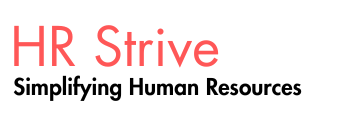Making Group Discussions More Engaging
When leading a group discussion, the real goal is to unlock insight and gather ideas. As the facilitator, your role isn’t to dominate the talk—but to guide it in a way that invites everyone to contribute. A great discussion happens when people feel safe to speak and are genuinely listened to.
Effective facilitators are active listeners. They reflect back what’s being shared and dig deeper with thoughtful follow-up questions—like, “Several of you mentioned this challenge—what do you think makes it so common?”
They’re also tuned in to body language and group dynamics. If someone is quiet, a gentle prompt like “Jack, have you experienced this in your department?” can help draw them in. And when one person starts to take over, it’s the facilitator’s job to respectfully shift focus to keep the conversation balanced and productive.
Running Team Meetings That Actually Work
Routine staff meetings are meant to keep everyone informed, aligned, and moving forward—but when they lack purpose or structure, they become dreaded time drains. To make meetings more meaningful:
Tips for Hosting Better Team Meetings
-
Clarify the purpose. Don’t meet just to meet—ensure there’s a clear reason and that attendees know why they’re there.
-
Share an agenda in advance. Outline key topics and let people know what to prepare.
-
Respect people’s time. Keep meetings as short as possible while still covering what’s needed.
-
Start on time. Leave room for casual catch-ups before the meeting, but stick to the agenda once you begin.
-
Switch things up occasionally. Try a new setting, bring in a guest, or use interactive activities to refresh the energy.
-
Use stories to engage. Storytelling—whether through real-life examples or creative tools like roleplay—makes your message stick.
-
Address tensions carefully. If deeper conflicts arise, acknowledge them and plan to resolve them later, outside the meeting.
-
Wrap up with clarity. Review any decisions, next steps, and who’s doing what.
-
Send a follow-up. For complex meetings, a quick summary email helps keep everyone aligned.
-
Review how meetings are going. Every so often, ask the team how meetings can be improved.
Building a Clear and Useful Communication Plan
A communication plan sets the tone for how information flows across your team, department, or entire organization. It ensures people know what to expect—how, when, and through what channels communication will happen.
There’s no single format that works for everyone, but a good communication plan generally includes:
-
Purpose: What are you trying to communicate? What’s the outcome you want?
-
Audience: Who needs to hear this? What do they expect, and how often? Internal and external audiences may have different needs.
-
Channels: Which tools or platforms will you use—email, meetings, Slack, reports, etc.? If resources are lacking, plan workarounds or alternatives.
Some messages might need a formal tone, while others are better suited for informal or one-on-one conversations. A thoughtful plan helps avoid confusion and ensures your message lands effectively.
Making Jargon Understandable
Every workplace develops its own “insider language”—technical terms, acronyms, or shorthand. While these make sense to regular users, they can be confusing or alienating to others.
HR teams should always be mindful of this, especially when communicating with mixed audiences. That doesn’t mean dumbing things down—it means making them clear and inclusive. For example, a software developer might describe a new feature in technical detail, but someone in PR might need a more user-friendly explanation to understand its value.
Translating jargon improves communication across the board. It encourages participation in meetings, improves feedback quality, and helps people feel more confident contributing to group discussions.
A good rule of thumb: if a term might confuse even one person in the room, offer a quick definition or explanation.
Listening to Anonymous Voices
Sometimes people have something important to say but aren’t comfortable attaching their name to it. That’s where anonymous communication tools come in—whether it’s suggestion boxes, surveys, or whistleblower hotlines.
Allowing anonymous input can help uncover hidden issues, protect staff, and encourage honesty. While there's always a risk these channels might be misused, they often bring up insights that would otherwise stay buried—especially when power dynamics or fear of retaliation are at play.
Anonymous feedback isn’t always negative, either. Some employees may offer innovative ideas anonymously simply because they worry it’s “not their place.” Creating a safe space for these voices can lead to stronger engagement, better decision-making, and even higher retention.
Still, if there’s a heavy reliance on anonymous communication, it may be worth asking: Why do people feel they can’t speak openly? Is it fear of backlash? A belief that feedback won’t matter? These are cultural red flags. Understanding and addressing them can go a long way in building a more trusting, transparent workplace.
